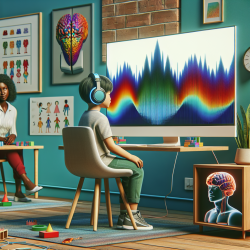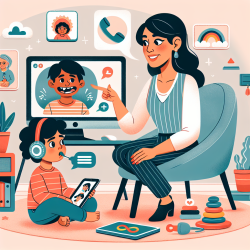Introduction
The recent study titled "Long-latency auditory evoked potential in children with stuttering" offers significant insights into the auditory processing differences between children who stutter and those who do not. This research is pivotal for speech-language pathologists and other practitioners seeking data-driven approaches to enhance therapeutic outcomes for children with stuttering.
Understanding Long-Latency Auditory Evoked Potentials (LLAEP)
LLAEPs, particularly Mismatch Negativity (MMN) and P300 cognitive potential, are critical in assessing cognitive processing in individuals. MMN reflects the brain's automatic response to changes in auditory stimuli, while P300 is associated with voluntary cognitive tasks, evaluating perception, attention, and auditory memory skills.
Key Findings from the Study
The study involved 50 children aged 6 to 11, including 15 with stuttering and 35 without. It revealed significant differences in the latencies and amplitudes of MMN and P300 between the two groups. Specifically, children with stuttering exhibited:
- Delayed latencies in both MMN and P300, indicating slower auditory processing.
- Increased amplitude in MMN, suggesting an altered neural response to auditory stimuli.
- Altered wave morphology, which could be linked to the challenges in speech fluency.
Implications for Practice
These findings underscore the importance of incorporating electrophysiological assessments in the evaluation and treatment of stuttering. By understanding the underlying auditory processing deficits, practitioners can tailor interventions to address specific cognitive and neural challenges. This approach not only enhances therapeutic efficacy but also provides a more comprehensive understanding of each child's unique needs.
Encouraging Further Research
The study highlights the need for continued research into the use of LLAEPs in stuttering. Future studies could explore the impact of targeted interventions on LLAEP outcomes, providing further evidence for their role in therapy. Practitioners are encouraged to stay informed about emerging research and consider how these insights can be integrated into practice.
Conclusion
Understanding the auditory processing differences in children with stuttering is crucial for developing effective therapeutic strategies. By leveraging data from studies like this, practitioners can make informed decisions that enhance the quality of care and improve outcomes for children with speech fluency disorders.
To read the original research paper, please follow this link: Long-latency auditory evoked potential in children with stuttering.










